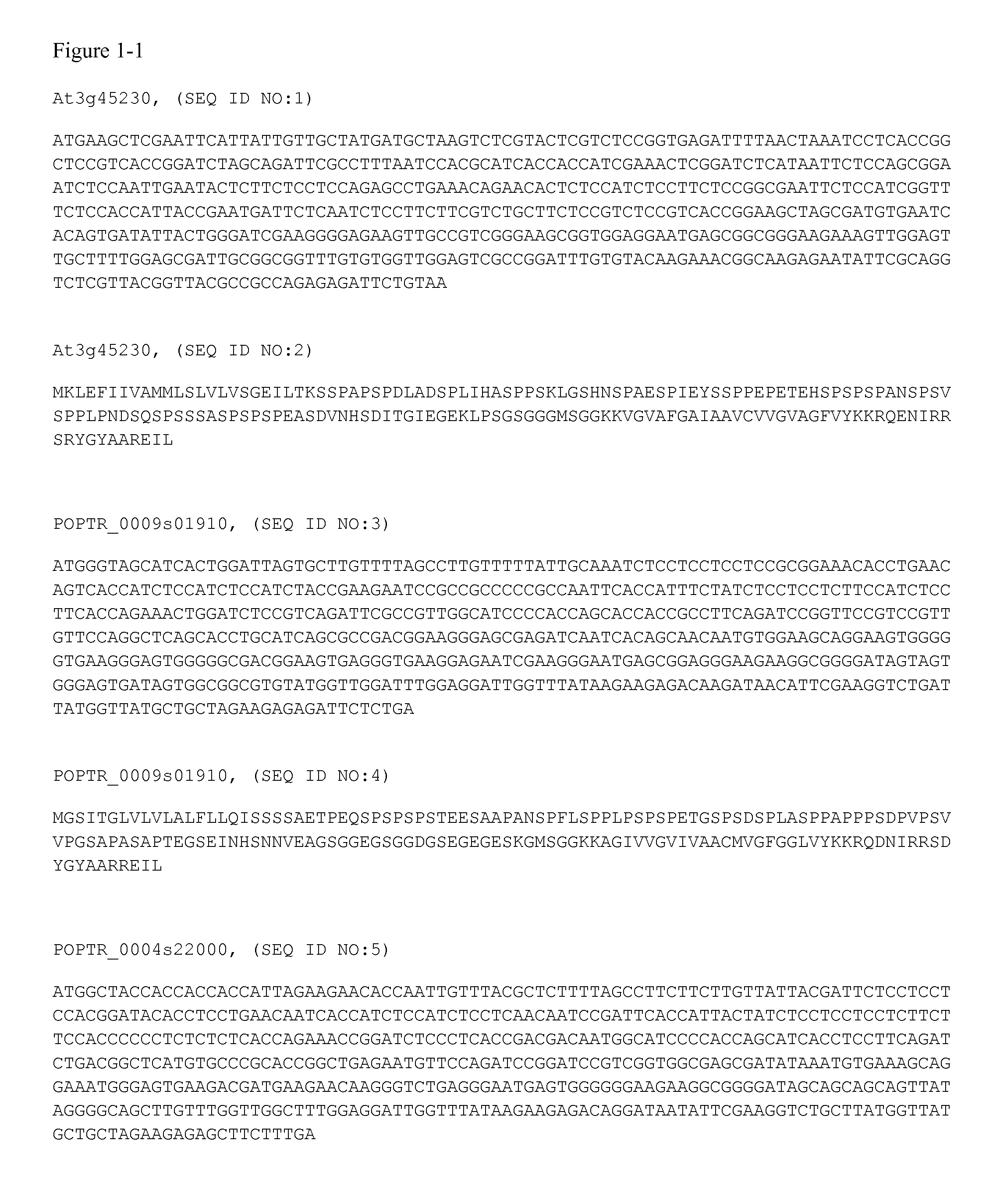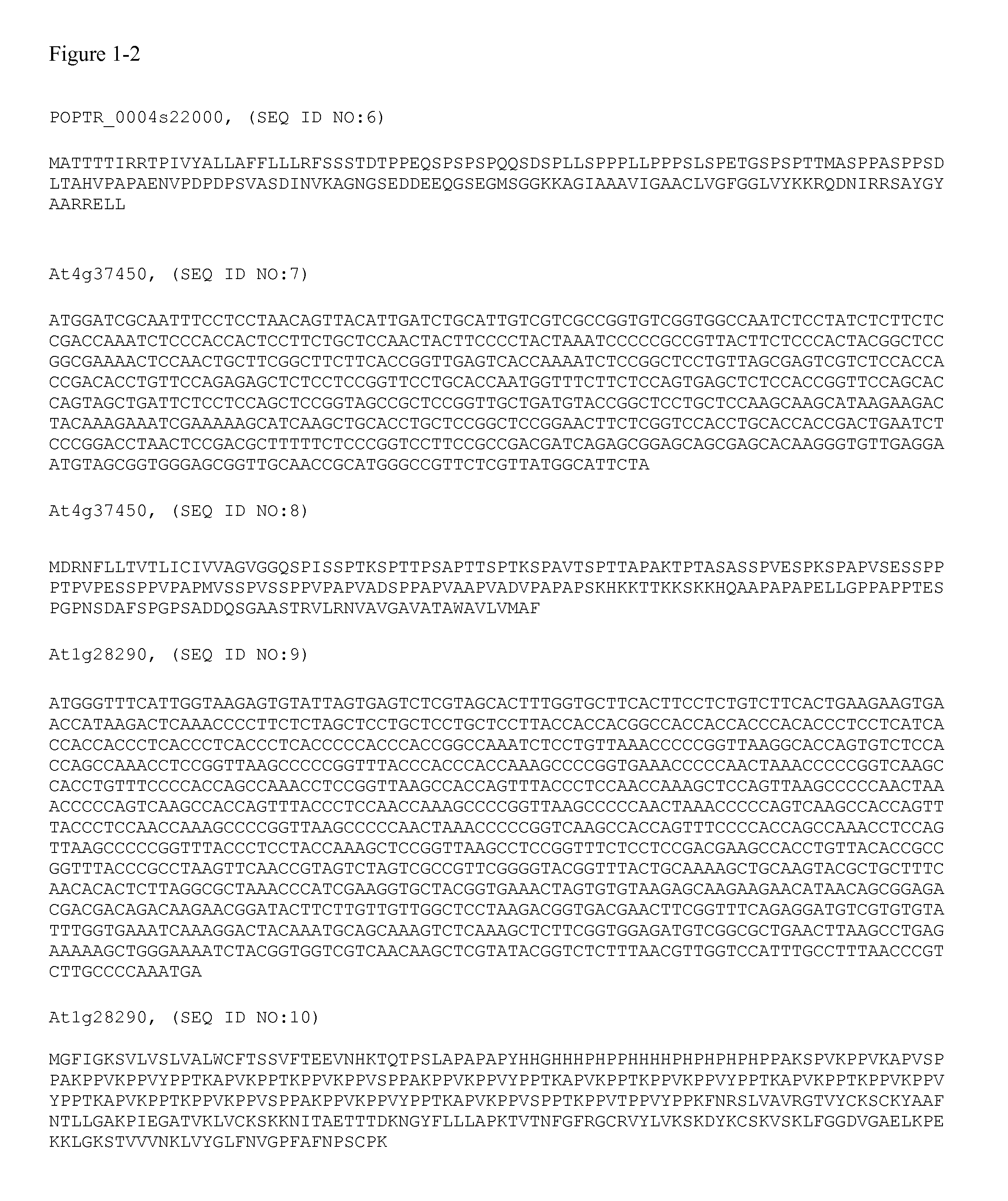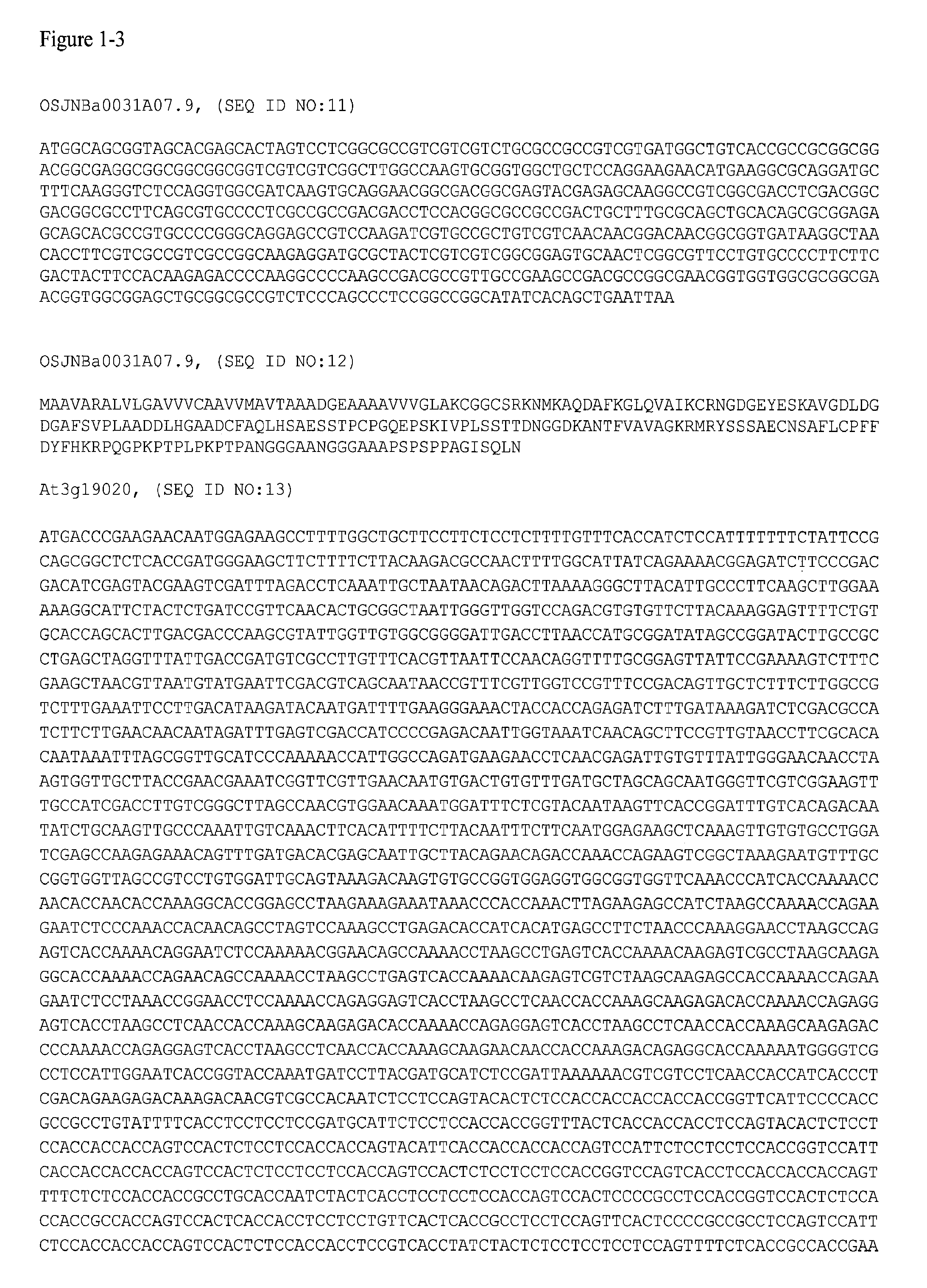Transgenic plants and methods of using same
a technology of transgenic plants and plants, applied in the field of transgenic plants, can solve the problems that none of these efforts focus on hydroxyproline, and achieve the effects of reducing growth, increasing expression, and reducing growth
- Summary
- Abstract
- Description
- Claims
- Application Information
AI Technical Summary
Benefits of technology
Problems solved by technology
Method used
Image
Examples
example 1
[0135]Plant cell walls are comprised largely of the polysaccharides cellulose, hemicellulose, and pectin along with ˜10% protein and up to 40% lignin. These wall polymers interact covalently and noncovalently to form the functional cell wall. Characterized cross-links in the wall include covalent linkages between wall glycoprotein extensins, between rhamnogalacturonan II monomer domains, and between polysaccharides and lignin phenolic residues. Here we show that two isoforms of a purified Arabidopsis arabinogalactan-protein (AGP) encoded by gene At3g45230 / BAC43203C are covalently attached to wall matrix hemicellulosic and pectic polysaccharides, with rhamnogalacturonan I (RG I) / homogalacturonan (HG) linked to the rhamnosyl residue in the arabinogalactan (AG) of the AGP and with arabinoxylan attached to either a rhamnosyl residue in the RG I domain or directly to an arabinosyl residue in the AG glycan domain. The existence of this wall structure, named Arabinoxylan-Pectin-Arabinogala...
example 2
[0201]apap1-3 transgenic Arabidopsis and wild-type Arabidopsis were grown in a growth chamber under standard conditions. At days 10, 12, 14, 17, 19, and 21 the shoot length was measured. The apap1-3 mutant plants had a longer shoot length than the wild-type plants, and the difference was significant at days 10, 12, 14, 17, and 19 (see FIGS. 15a and 15b). The increased shoot length of the transgenic plants indicates they have increased growth and shoot elongation compared to the wild-type plants.
example 3
[0202]apap1-3 transgenic Arabidopsis and wild-type Arabidopsis were grown in a growth chamber under standard conditions. The release of glucose and xylose from the 8 week old plants was evaluated by a combined high-throughput pretreatment and enzymatic hydrolysis process (Studer et al., 2010, Biotechnol. Bioeng., 105:231-238) and release of xylose was found to be significantly higher in apap1-3 transgenic Arabidopsis plants (see Table 13). The measurement of cell wall sugars (glycosyl residue composition by TMS derivatization and GC / MS as described in example 1) revealed that apap1-3 had increase total sugar compared to wild type Table 14). The increased release of xylose and increased total sugars indicates transgenic plants having decreased expression of an AGP polypeptide core have decreased recalcitrance and increased total sugar compared to wild-type plants.
TABLE 13Sugar release data of alcohol insoluble residues (AIR) of cellwalls (biomass) isolated from aerial tissues of apap...
PUM
| Property | Measurement | Unit |
|---|---|---|
| 13C chemical shifts | aaaaa | aaaaa |
| heights | aaaaa | aaaaa |
| heights | aaaaa | aaaaa |
Abstract
Description
Claims
Application Information
 Login to View More
Login to View More - R&D
- Intellectual Property
- Life Sciences
- Materials
- Tech Scout
- Unparalleled Data Quality
- Higher Quality Content
- 60% Fewer Hallucinations
Browse by: Latest US Patents, China's latest patents, Technical Efficacy Thesaurus, Application Domain, Technology Topic, Popular Technical Reports.
© 2025 PatSnap. All rights reserved.Legal|Privacy policy|Modern Slavery Act Transparency Statement|Sitemap|About US| Contact US: help@patsnap.com



